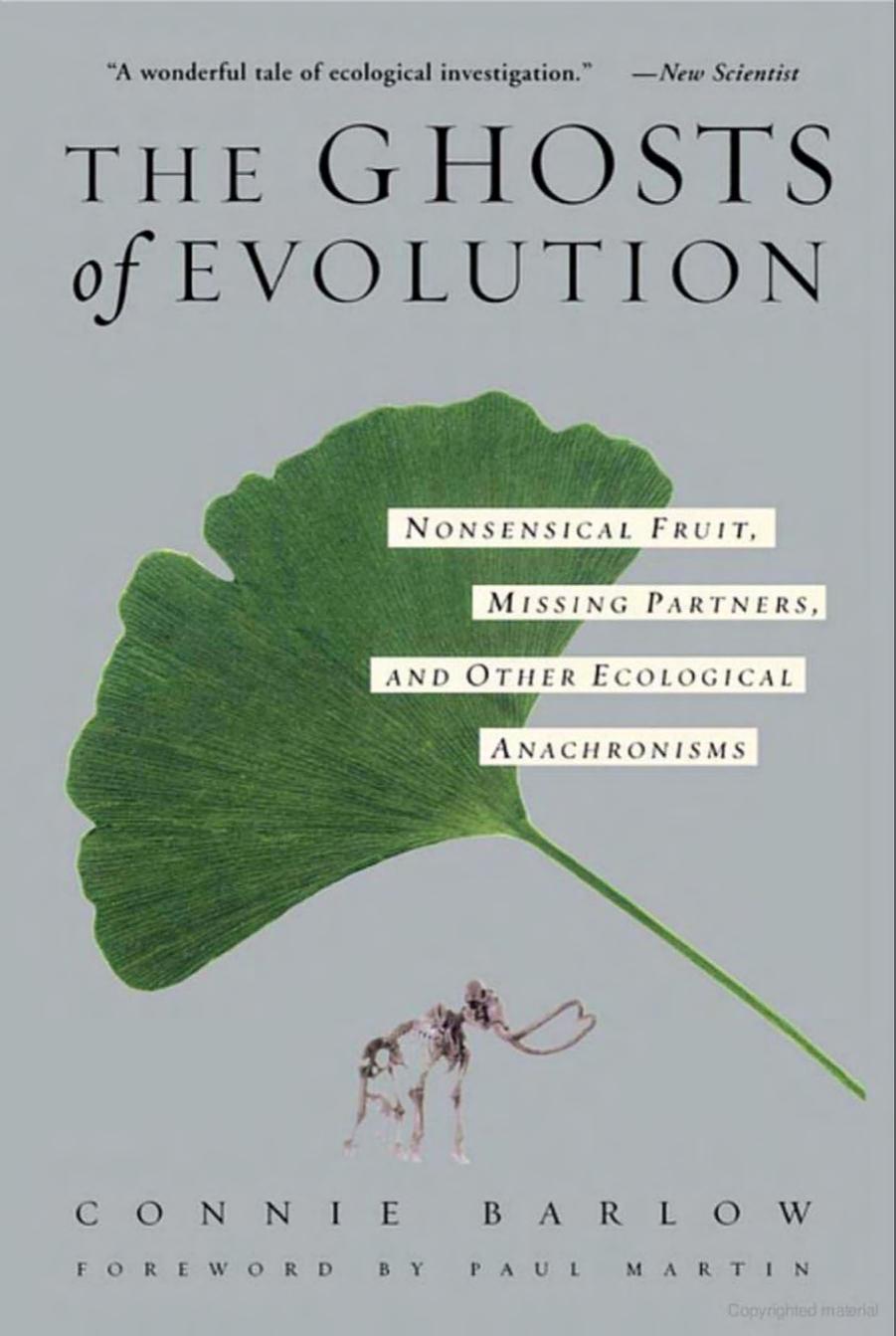The Ghosts of Evolution by Connie Barlow

Author:Connie Barlow [CONNIE BARLOW]
Language: eng
Format: epub, pdf
Publisher: Basic Books
Published: 2011-12-31T16:00:00+00:00
It is, likewise, one short step further to extend the notion of individuality to encompass tissue transplanted to the other side of the world. Peter Del Tredici has done that for ginkgo. In 1989 he conducted field research at the Tian Mu Shan ginkgo reserve in a remote, mountainous region of eastern China.28 This small reserve of natural forest contains the only (possibly) wild ginkgos remaining in the world. Even here ginkgo is a troubled plant; Del Tredici was unable to find a single seedling. Some young stems did exist, but they had been produced by clonal growth of old trees. Part of ginkgo’s problem may be a paucity of suitably open sites for seedling establishment, but Del Tredici believes that other factors are important as well.29 He returned to the United States with vegetative material cut from the old trees at Tian Mu Shan, from which he then coaxed new stems and roots for planting in Arnold Arboretum. In a very real sense, wild Chinese ginkgo trees are now growing partly in an alien land, and anyone who lives in Boston can easily visit them.
The land is not so alien, actually. Ginkgo biloba is an exotic in North America only if one insists on a constricted view of time. Rather, the tree has been helped by humans to reinhabit its native range. Fossil evidence shows that the genus Ginkgo thrived in temperate regions throughout the Northern Hemisphere during the Jurassic and into the Cretaceous. The species of Ginkgo alive today may have originated a hundred million years ago. It is truly what Darwin called a living fossil.
Ginkgo disappeared from North America just seven million years ago, and from Europe two million years ago. The most recent fossils come from southwestern Japan, not China. Mountainous regions are poor environments for preserving organic material or leaf impressions. Erosion rather than sedimentation is the geological condition that prevails in steep terrain. Thus the ginkgo lineage’s relict population held on in a region that would have produced no recent opportunities for fossilization.
Whether or not the ginkgos at the Tian Mu Shan reserve truly are wild is a topic of debate. The tree has been associated with humans for so long that the question resists an answer. Perhaps the trees dwindled since the Mesozoic to just this one spot. Or perhaps the last wild population existed elsewhere, but the forest was converted into farmland. The trees living in the mixed-species forest at Tian Mu Shan today may be the offspring of trees originally planted by monks in the vicinity of an old temple.30 Raw ginkgo seeds have long been used medicinally and as food when cooked (cooking inactivates most, but not all, toxins). The tree is also valued for two reasons beyond the material. First, because the roots, leaves, and wood are resistant to insect and fungal attack, ginkgo stems can live for several thousand years, attaining an enormous girth.31 Very old trees are revered in Asian cultures, and the oldest specimens in any given area are always found growing in association with Buddhist or Taoist temples.
Download
This site does not store any files on its server. We only index and link to content provided by other sites. Please contact the content providers to delete copyright contents if any and email us, we'll remove relevant links or contents immediately.
| Anatomy | Animals |
| Bacteriology | Biochemistry |
| Bioelectricity | Bioinformatics |
| Biology | Biophysics |
| Biotechnology | Botany |
| Ecology | Genetics |
| Paleontology | Plants |
| Taxonomic Classification | Zoology |
Sapiens: A Brief History of Humankind by Yuval Noah Harari(14252)
The Tidewater Tales by John Barth(12608)
Mastermind: How to Think Like Sherlock Holmes by Maria Konnikova(7227)
Do No Harm Stories of Life, Death and Brain Surgery by Henry Marsh(6890)
The Thirst by Nesbo Jo(6826)
Why We Sleep: Unlocking the Power of Sleep and Dreams by Matthew Walker(6618)
Life 3.0: Being Human in the Age of Artificial Intelligence by Tegmark Max(5474)
Sapiens by Yuval Noah Harari(5294)
The Longevity Diet by Valter Longo(5019)
The Body: A Guide for Occupants by Bill Bryson(4974)
The Rules Do Not Apply by Ariel Levy(4861)
The Immortal Life of Henrietta Lacks by Rebecca Skloot(4525)
Animal Frequency by Melissa Alvarez(4395)
Why We Sleep by Matthew Walker(4360)
The Hacking of the American Mind by Robert H. Lustig(4318)
Yoga Anatomy by Kaminoff Leslie(4305)
All Creatures Great and Small by James Herriot(4232)
Double Down (Diary of a Wimpy Kid Book 11) by Jeff Kinney(4207)
Barron's AP Biology by Goldberg M.S. Deborah T(4097)
